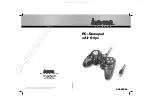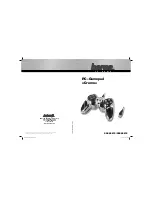21
3B) Occupancy and Overrides
The occupancy of the zones is controlled by the schedule in the RTU controller.
-
When this schedule output value is unoccupied (as shown on the RTU controller display), then the
attached zones will be unoccupied mode.
-
When this schedule output value is occupied (as shown on the per RTU controller display), then
the attached zones will be either in occupied mode or stand-by mode if local PIR function is used.
It is possible to use remote scheduling though either BI1 or to use a remote time clock contact closure or a
BACnet network occupancy command. This will disable the local schedule occupancy function to the
zones. For more information on BACnet, please refer to global override section of the zoning system
integration guide. The whole system and all attached zones can only be initiated at the RTU controller
level. This is done by using the local user menu at the RTU controller or by configuring the extra digital
input (DI1) for a remote override button if it is required to be installed centrally.
Any zone overrides will trigger the necessary heating or cooling action for the required zones only. All other
attached zones not requiring an override will remain in the unoccupied state.
3C) RTU interface Lockouts
RTU controller can have functions locked out for the local user. This can prevent unwanted inputs to the
system as a whole when the RTU controllers are installed in public areas or when certain local user
interface functions of the RTU controllers are to be prevented.
Lock level is access through the Lockout configuration parameter. Please set the appropriate level for each
individual zone in the system according to their requirements.
VZ76 Controller Lockout Level Configuration Value
0
1
2
Global override function through the user menu
Yes Yes No
System mode access through the user menu
Yes No
No
Local schedule access through the user menu
Yes No
No
Local clock setting through the user menu
Yes Yes Yes
3D) RTU Heating and Cooling Supply Air Temperature Lockouts
One problematic aspect of any VAV zoning system is high demand for (heating or cooling) when most of
the zone VAV dampers are closed. This leads to most of the supply air being re-circulated through the
pressure by-pass and can lead to extremely hot or cold supply temperature.
-
To prevent high supply temperatures (specifically with gas heating RTU), adjust discharge air
temperature high limit to required value.
Discharge air temperature high limit default value is:
80°F
Range is: 70°F to 150°F (21°C to 65°C) (increments: 0.5° or 5°)
-
To prevent low supply temperatures (specifically to prevent freezing of RTU DX coils when a high
by-pass ratio is in effect), adjust discharge air temperature low limit to required value.
Discharge air temperature low limit default value is:
55°F
Range is: 35 to 65°F (2.0°C to 19.0°C) (increments: 0.5° or 5°)


















